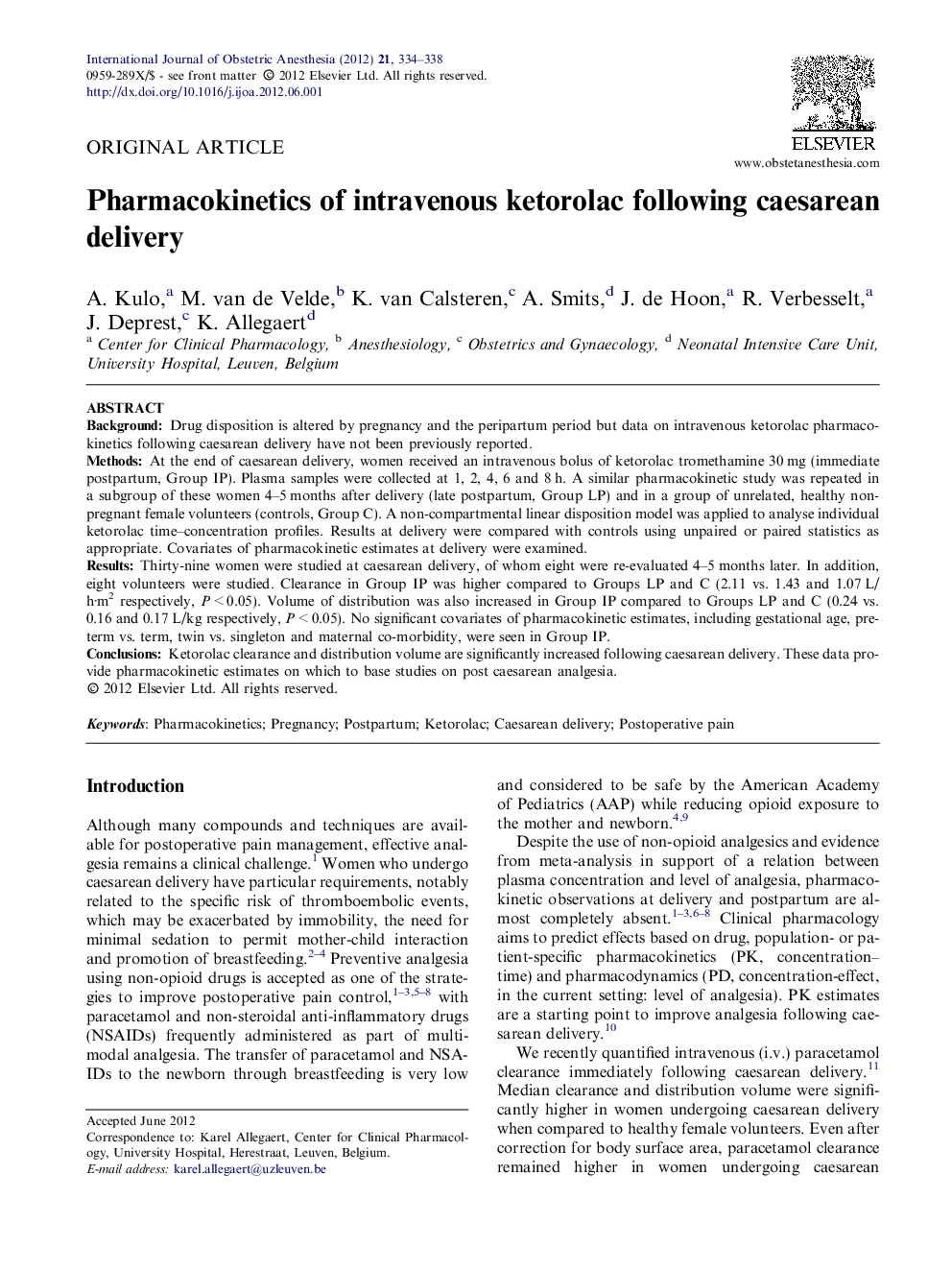| Article ID | Journal | Published Year | Pages | File Type |
|---|---|---|---|---|
| 2757888 | International Journal of Obstetric Anesthesia | 2012 | 5 Pages |
BackgroundDrug disposition is altered by pregnancy and the peripartum period but data on intravenous ketorolac pharmacokinetics following caesarean delivery have not been previously reported.MethodsAt the end of caesarean delivery, women received an intravenous bolus of ketorolac tromethamine 30 mg (immediate postpartum, Group IP). Plasma samples were collected at 1, 2, 4, 6 and 8 h. A similar pharmacokinetic study was repeated in a subgroup of these women 4–5 months after delivery (late postpartum, Group LP) and in a group of unrelated, healthy non-pregnant female volunteers (controls, Group C). A non-compartmental linear disposition model was applied to analyse individual ketorolac time–concentration profiles. Results at delivery were compared with controls using unpaired or paired statistics as appropriate. Covariates of pharmacokinetic estimates at delivery were examined.ResultsThirty-nine women were studied at caesarean delivery, of whom eight were re-evaluated 4–5 months later. In addition, eight volunteers were studied. Clearance in Group IP was higher compared to Groups LP and C (2.11 vs. 1.43 and 1.07 L/h·m2 respectively, P < 0.05). Volume of distribution was also increased in Group IP compared to Groups LP and C (0.24 vs. 0.16 and 0.17 L/kg respectively, P < 0.05). No significant covariates of pharmacokinetic estimates, including gestational age, preterm vs. term, twin vs. singleton and maternal co-morbidity, were seen in Group IP.ConclusionsKetorolac clearance and distribution volume are significantly increased following caesarean delivery. These data provide pharmacokinetic estimates on which to base studies on post caesarean analgesia.
